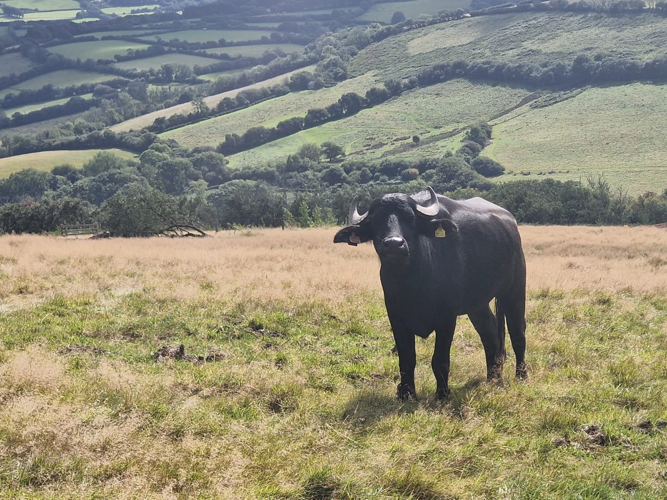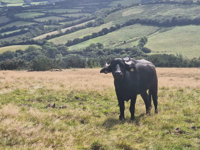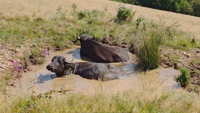
(NTI Bob W / National Trust via SWNS)
By Lauren Beavis
Water buffalo have been introduced by the National Trust for the first time - in a bid to restore agricultural land back to its natural state.
Six female water buffalo have been brought to a section of former agricultural land in Tattiscombe, west Exmoor in Devon.
It is an "experiment" to connect and restore habitats and boost biodiversity.
The 120-acre site, cared for by the National Trust, includes wood pasture, grassland, hedgerows and wetlands.
The National Trust already uses cattle and pigs in Devon to help with the restoration of the landscape - but this is the first time they have ever used water buffalo.
Murray Sharpe, Farm Manager for the West Exmoor National Trust, said: “Buffalo are specialized wetland animals, and this site offers an ideal habitat for them.
"They’re hardy, disease-resistant and able to thrive on rough forage.
''Their thick skin and natural wallowing habits make them more tolerant of flies and ticks than cattle, which means they’re well-suited to this landscape.
“By grazing and browsing around the many ponds, scrapes and ditches on site, they’ll help shape a broader range of habitats than we could achieve without them.
"In doing so, they’ll create a wealth of new niches for wildlife and play a role in driving the ecology of the site.”

(NTI Bob W / National Trust via SWNS)
Known as ‘wetland architects’, the buffalo use their hooves to churn soil, create wallows and keep pools open - slowing water flow and helping it settle naturally.
Their browsing behavior clears scrub, making space for wildflowers and other species to thrive, which in turn supports insects, birds and mammals.
Alex Palmer, Project Manager for the North Devon Riverlands project, added: “Introducing buffalo here will build on the success of the work already completed on site, adding a natural way to keep ponds and scrapes open, spread wetland plants and create new niches for insects and birds.
"The buffalo are a key component to the future success for this site and we are looking forward to seeing their impact.”
Alongside the buffalo,â¯Mangalitsa pigsâ¯are also helping to shape the landscape as their rooting behavior creates bare ground that supports wildflowers and insects, while slowing surface water.
These disturbed patches are over-sown with wildflower seed, which the livestock help distribute naturally as they move across the site.
As the buffalo settle into their new home, the team will continue monitoring how the landscape responds - tracking changes in water flow, plant diversity and wildlife numbers over the coming years.
The project is funded by the Government’sâ¯Species Survival Fund, developed by Defra and delivered by The National Lottery Heritage Fund in partnership with Natural England and the Environment Agency.

















(0) comments
Welcome to the discussion.
Log In
Keep it Clean. Please avoid obscene, vulgar, lewd, racist or sexually-oriented language.
PLEASE TURN OFF YOUR CAPS LOCK.
Don't Threaten. Threats of harming another person will not be tolerated.
Be Truthful. Don't knowingly lie about anyone or anything.
Be Nice. No racism, sexism or any sort of -ism that is degrading to another person.
Be Proactive. Use the 'Report' link on each comment to let us know of abusive posts.
Share with Us. We'd love to hear eyewitness accounts, the history behind an article.